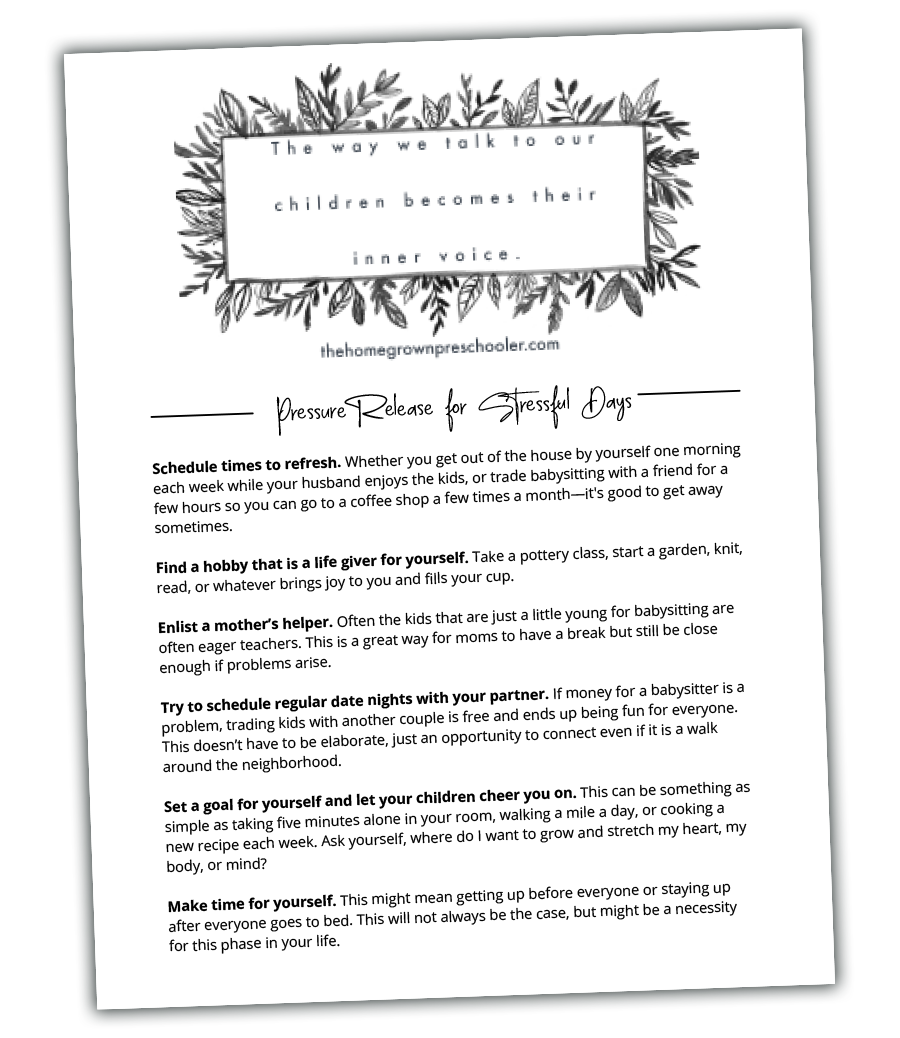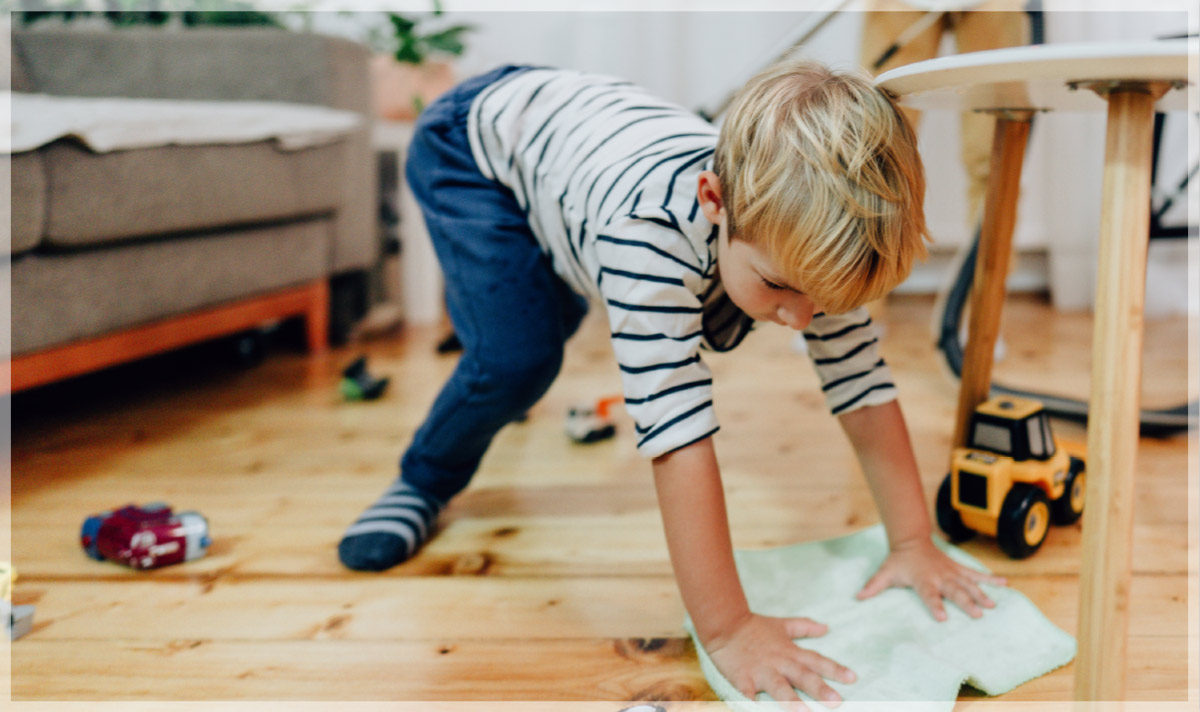



is time to leave for your weekly grocery run and your three-year-old comes downstairs with his shirt on backward and wearing shorts, cowboy boots, and a superman cape. Grinning ear to ear, he is so proud that he dressed himself. How do you react? Are you going to critique his outfit and send him upstairs to change, or will you join in his exuberation and head out the door?
How do you respond to the toddler who insists she “do it myself” and then spills the milk all over the table?
What about the five-year-old who cries every time you try and practice writing and refuses to play flash card games?
These are just a few examples of children communicating their desires through behavior. As we talk to parents about the early years, we often share the phrase “behavior is communication.” If you want to know your children and what is important to them, pay attention to their behavior. If you want to build a safe emotional space in your home, your response to these types of scenarios is critical.
As parents, we have the unique opportunity to impact our young children on the deepest level. Maya Angelou once said, “I’ve learned that people will forget what you said, people will forget what you did, but people will never forget how you made them feel.”
During the moments mentioned above, how do we make our children feel? Do we scold them because they are wearing such a “ridiculous” outfit, or do we celebrate their ability to dress themselves and head out the door? Do we lose it with the toddler and yell an “I told you so” or do we grab a paper towel and suggest cleaning it up together? Over the years, we have learned that a lighthearted approach, when possible, keeps us in the right frame of mind and shows our children that we honor their feelings and do not expect them to be perfect. Remember, most of these little things will not matter in five minutes, let alone five years.

After many years of parenting, Lesli and I have realized that it is our expectations that often set up a situation for failure. For example, we have to be out the door with all of our children by 9 a.m. tomorrow. We usually get things ready the night before, but this time, we go to bed and oversleep in the morning. Rushing to get everyone dressed, fed, and out the door, we become more and more agitated that our children are not listening to us. Hmmmm??? Is that really what is happening? If we are being honest with ourselves, we are getting agitated because we were not prepared and expect our children to function ten times faster to make up for that. By the time everyone is in the car, we are exasperated and our children are crying.
Of course this happens to all of us on occasion, but let’s remember to ask ourselves: How do we want to make them feel? What words do we want to use? Because our words are the ones they will remember when they are older, and those same words will become their inner voice. If we want our children to feel emotionally safe with us in the teenage years, we must create an emotionally safe environment in the early years.
1. Honor their feelings. Children can be so emotional, and so can adults. Is this a bad thing? No. One of us cries at everything (Kathy). We believe that emotions are given from the Lord and we should not try and change those feelings. When your child is sad, use phrases such as, “I see a sad face over there. Would you like to talk about it?” When your child is angry, acknowledge that too. It is okay to be mad. You feel how you feel and by allowing your child to feel, you are helping them process emotion. When you allow them to process these big emotions, you are telling them that it is okay to let those feelings be felt. So many adults spend years in therapy because they did not learn to process their emotions in the early years.
2. Don’t make a two, a ten. Often as parents, we are having a bad day ourselves and this causes our reactions to day-to-day situations to be heightened. These are the times we have to be careful not to let those “two” moments become “ten” moments. For example, when your child pitches the fit about those flash cards, a “two” reaction would be to say something like, “Let’s go find the letters of your name around the house instead of doing these flash cards.” A “ten” reaction would be to yell, “Sit down and stop crying! You are not moving until we go through every one of these flash cards.” At the age of five, flash cards are not the best way to teach a child to read anyway. Playing games with words and letters is much more effective. You get the point. Keep those “two” situations a “two” and don’t blow them up to a “ten.” Our children will learn this skill from us and as they deal with their own emotions. They will learn to keep the small things small.
3. Be available. It does not take children long to realize when we are too busy for them. When your child comes to you upset or just being clingy, pay attention. Many times, these situations seem to happen when we are in the middle of something, so we dismiss our children with the phrase, “In a minute.” If we do this enough, they might stop coming to us. We are not saying that your children’s demands should rule your life, but we are saying that you need to pay attention to those tender (although sometimes nagging) requests by your children and be available to them. Tell your friend you will call back, let the laundry pile sit, put your phone down… be emotionally available to them, not just physically. You will find that it does not take long to fill their cup and they walk away knowing that you are an emotionally safe place to land.
Lesli and I both come with a total of over fifty years of combined parenting experience. Many of these lessons were learned the hard way, and we were not perfect! If you are struggling with your reactions to similar scenarios in your home, we want to share some tips with you so you can create some margin to take a breath and renew your perspective. When Lesli’s children were very young, she and her husband agreed that her time to refresh would be Saturday mornings, and that provided a pressure release valve for stresses of the week. Just knowing it was coming lowered her stress level in the home. We also took turns with each other’s children to give each other some down time. Never be afraid to seek other women in your community to be a listening ear! The homeschooling community is full of wise women who will usually be happy to encourage another homeschool mom. We hope this article will make you pause a minute and give a gentle answer, creating an emotionally safe space for the little ones in your life.
For more ideas and activities to connect with your children emotionally, request a free month of our award winning curriculum, A Year of Playing Skillfully as a special gift to the readers of Homeschooling Today, send an email to:

To download a printable with some “pressure release” ideas and a helpful reminder, go here.




